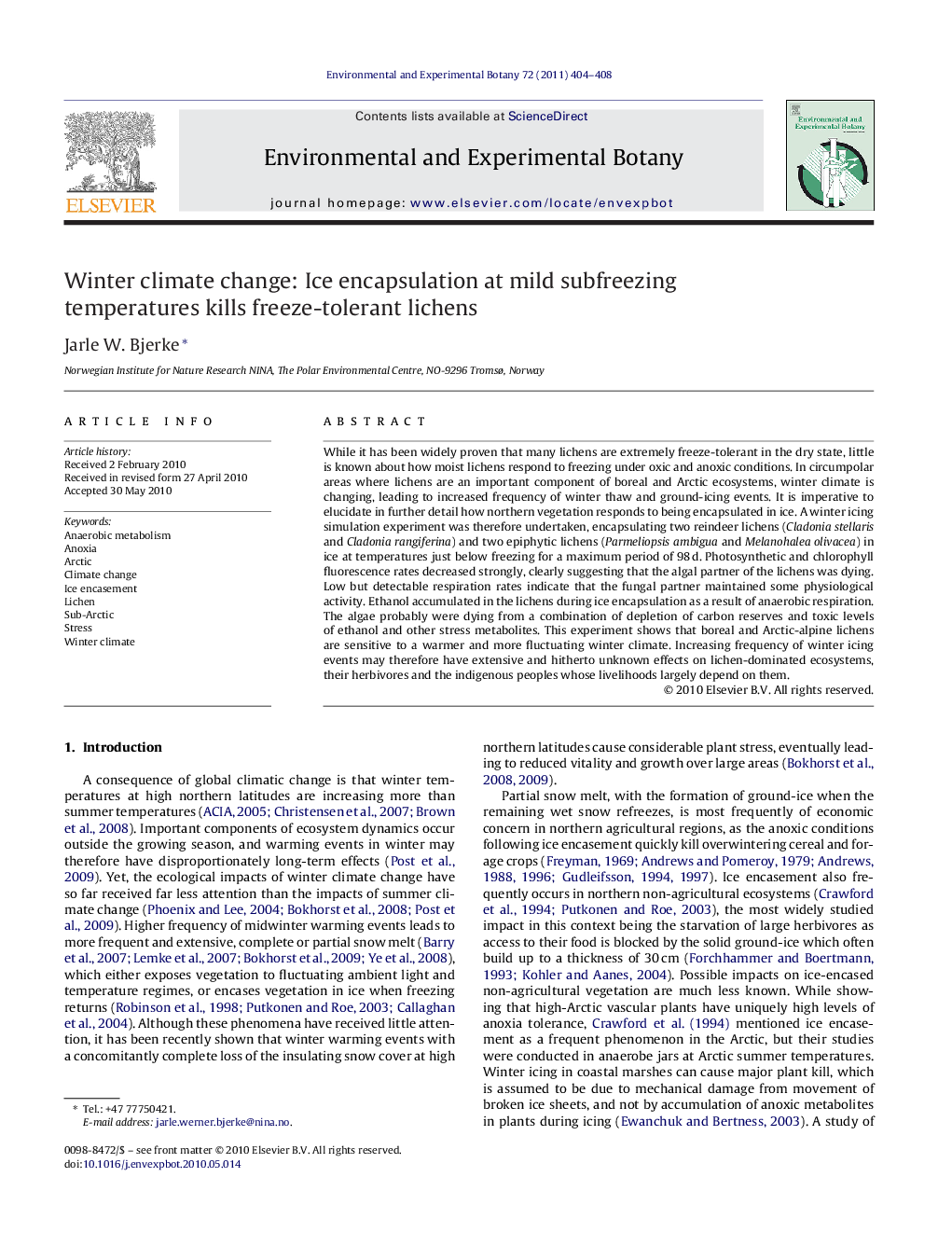| Article ID | Journal | Published Year | Pages | File Type |
|---|---|---|---|---|
| 4554892 | Environmental and Experimental Botany | 2011 | 5 Pages |
While it has been widely proven that many lichens are extremely freeze-tolerant in the dry state, little is known about how moist lichens respond to freezing under oxic and anoxic conditions. In circumpolar areas where lichens are an important component of boreal and Arctic ecosystems, winter climate is changing, leading to increased frequency of winter thaw and ground-icing events. It is imperative to elucidate in further detail how northern vegetation responds to being encapsulated in ice. A winter icing simulation experiment was therefore undertaken, encapsulating two reindeer lichens (Cladonia stellaris and Cladonia rangiferina) and two epiphytic lichens (Parmeliopsis ambigua and Melanohalea olivacea) in ice at temperatures just below freezing for a maximum period of 98 d. Photosynthetic and chlorophyll fluorescence rates decreased strongly, clearly suggesting that the algal partner of the lichens was dying. Low but detectable respiration rates indicate that the fungal partner maintained some physiological activity. Ethanol accumulated in the lichens during ice encapsulation as a result of anaerobic respiration. The algae probably were dying from a combination of depletion of carbon reserves and toxic levels of ethanol and other stress metabolites. This experiment shows that boreal and Arctic-alpine lichens are sensitive to a warmer and more fluctuating winter climate. Increasing frequency of winter icing events may therefore have extensive and hitherto unknown effects on lichen-dominated ecosystems, their herbivores and the indigenous peoples whose livelihoods largely depend on them.
